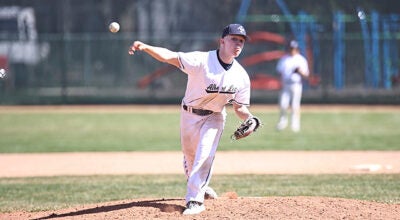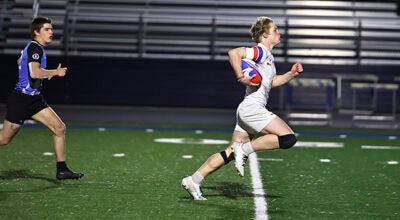Twins head outdoors at Target Field
Published 1:26 am Friday, April 2, 2010
Real grass? Clear sky? Warm breeze?
Yes, Minnesota Twins games will again be an all-natural experience.
After playing since 1982 on artificial turf covered by a gray ceiling held up by blasting air conditioners, the Twins have left the Metrodome for Target Field as the team’s 50th season in Minnesota begins.
Oh, and that new-ballpark smell will come with a fully loaded lineup.
“You look around and go, ‘Is this really our team right here?”’ first baseman Justin Morneau said, admiring the additions of J.J. Hardy, Orlando Hudson and Jim Thome to supplement the core of Denard Span, Joe Mauer, Morneau, Jason Kubel and Michael Cuddyer.
“We have so many weapons,” Morneau said.
The pitching staff has plenty to prove, from fifth starter Francisco Liriano’s latest chance to regain his rookie form to the cadre of replacement candidates for All-Star closer Joe Nathan. The Chicago White Sox are also a legitimate challenger in the AL Central, and the loss of Nathan to an elbow injury could loom large.
These Twins, though, feature a franchise-record payroll of about $96 million and carry the confidence of last year’s late push and tiebreaker victory over the Detroit Tigers that gave them their fifth division title in eight years.
“What impresses me the most is the camaraderie and the togetherness,” Thome said, adding: “You get a feel from the other side, and then when you come to this side you see how these guys pull for each other.”
The Twins no longer can rely on the din of the dome, where they went 49-33 last season, or beat balls into the carpet for infield singles. No more hustle doubles when bewildered opponents lose flies in the ceiling.
Don’t expect the home-field advantage to disappear, though, because the place will be packed for every game this year.
Two weeks before their April 12 home opener, the Twins had sold 2.5 million seats. Before playing a game they’re already at their second-highest season attendance total, behind only the 1988 record of more than 3 million. Official capacity of the cozy, canopy-encircled stadium is 39,504.
“Those are lofty numbers, and they are tremendously humbling,” team president Dave St. Peter said. “As an organization we are appreciative of the support. We sense the excitement, and we believe we can sustain it.”
To the surprise of some, Target Field was built without a retractable roof. The Twins committed $195 million toward the $545 million project, with the rest paid for by a special sales tax in Hennepin County, but a roof was deemed too expensive. The Twins believe they have a better design without it.
Average low temperatures for April and October are between 36 and 38 degrees, less-than-ideal night conditions. The Twins draw from a wide region, as well, and fans used to driving three hours for the guarantee of a game could be less likely to come.
“But there’s weather questions in Chicago. There’s weather questions in New York,” Mauer said. “I always tell people April might be a little rough, but if you’re playing in October I don’t think you’re really going to care how cold it is.”
Lakefront and seaboard cities get more precipitation, too, and are more prone to postponements. Over the last three seasons, according to STATS LLC research, the White Sox have the most postponed home games with 14. The Cleveland Indians are next with 11.
Outfielder Jacque Jones, who will start the season in Triple-A, used to play for the Cubs and insisted the early-season Chicago conditions are “much worse” than what the Twins will have.
“The wind that whipped in off the lake was nasty. They don’t have that in Minnesota,” Jones said.
Target Field has 244 radiant heaters in the concourses, and there’s a party deck with a fire pit where fans can watch the game from up high. Plus, as the locals will put it, “We’re Minnesotans. We own jackets.”
The ballpark is nestled in an 8-acre site, next to the downtown entertainment district. Right-field seats literally hang over the warning track. It’s built solely for baseball, so the Twins will never again have to quit playing in the afternoon to allow the field to be configured for a college football game later that night.
Their vision for Target Field is to become the next Fenway Park or Wrigley Field.
“I really believe this is a 100-year facility,” St. Peter said. “As long as Major League Baseball is still in existence, the Twins are going to have a team and we’re going to be playing at Target Field.”
Miami has a new ballpark on the way, but this is the end of baseball’s two-decade building boom that brought all the retro brick facilities back in play while the cavernous, cookie-cutter, multisport stadiums were phased out.
Target Field? It’s a mix of old, new — and organic.
It includes myriad museum-like tributes to the Metropolitan Stadium era, featuring the team’s original logo in center field with two “Twins” shaking hands.
There are plenty of modern luxuries, and sleek glass paneling galore.
And whether it’s wild rice soup at a concession stand, spruce trees framing the batter’s eye behind center field or native limestone walls, it’s uniquely Minnesotan.
With the extra revenue from the new ballpark to retain stars like Mauer and Morneau with rich multiyear contracts, the Twins now consider themselves an upper-middle-class team.
“All new ballparks have their peaks, and I’m sure the initial years will be very good to the Twins,” chief executive officer Jim Pohlad said. “Then it’ll be up to us to sustain it after that.”



